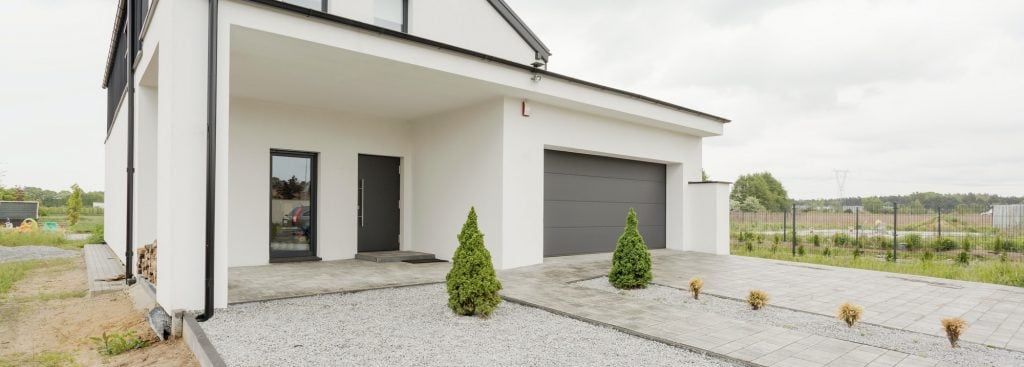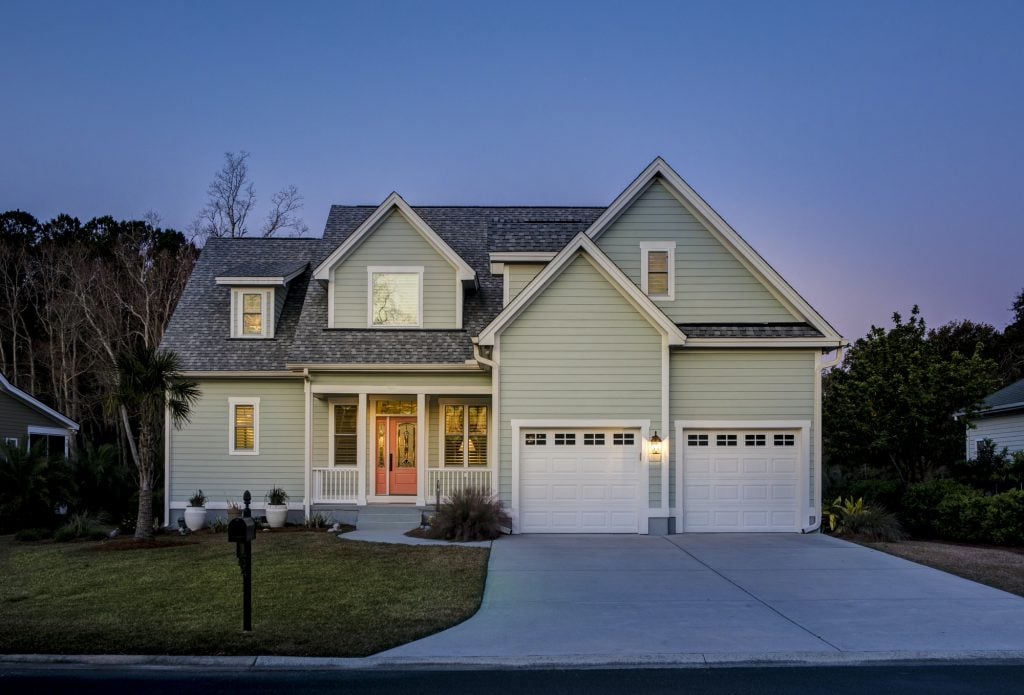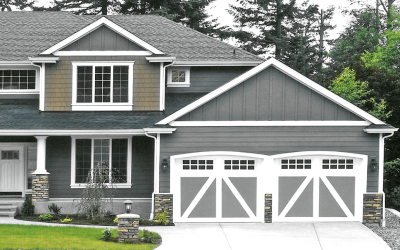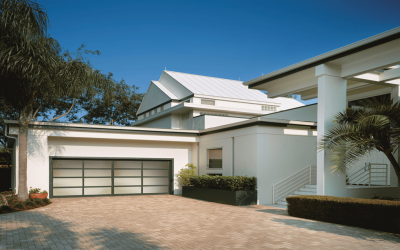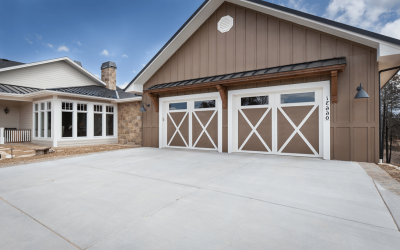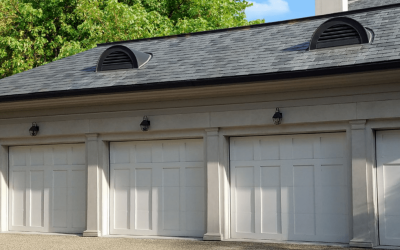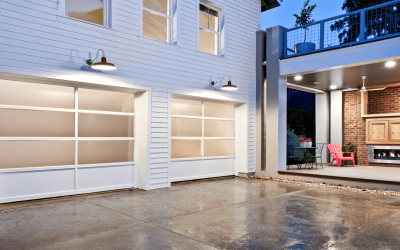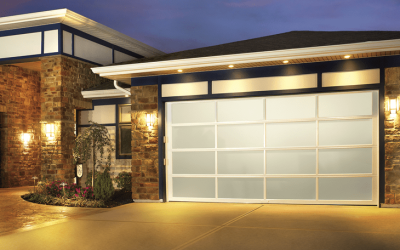Garage Door Springs Introduction
Counterbalancing the weight of a garage door to make it open and close easily, garage door springs play a significant role in the functioning of a door. These springs are designed to serve the exact same purpose as counter weights, which were used for balancing doors hundreds of years ago as well as today. Therefore, if a door’s weight is 200 pounds, a spring force of 200 pounds would be required to pull against the door’s weight. Springs that stretch or special parts that torque would be required to aid in the door’s balancing.
Garage door springs can be dangerous to replace. These springs have torque, which is in the wound torsion spring, or the extended extension spring’s stretch. The replacement of garage door parts often involves parts that are connected into the spring system. Unfortunately, many people have been injured or even killed during accidents that occurred during the replacement process because untrained individuals do not understand the significance of the forces that are working to maintain the door’s function. An accurate understanding of the garage door’s springs, weights, all of the garage door’s parts, and how these all work together for optimal functioning.
Torsion Springs
A metal shaft secures garage door torsion springs just above the garage door itself. The design is dependent upon the design, but the shaft actually can go through the center of the spring or springs. In other instances, the shaft may hold the spring inside. If the shaft passes through the center of the garage door torsion spring, the spring could be mounted inside hte shaft or at the shaft’s end near the garage door’s outside edge.
Balancing the garage door through the use of torque to the shaft while drums hold each end is the purpose of torsion springs. Each drum has a cable attached which extends to the bottom fixture at the very bottom of the door where it is secured. Torsion springs winds as well as unwinds when the door opens and closes in order to balance the entire door system.
There are three characteristics that help with the determination of the lift and cycle life of the torsion springs. Those three characteristics involve the inside diameter, wire size and the length. The spring’s torque determines the lift and determines how much weight the spring has the capabilities of lifting. What is the cycle life? It tells the number of times that the garage door can open and close prior to the spring’s breakage.
Standard Torsion Springs
The most commonly used residential garage door torsion springs are standard torsion springs. The number of springs is dependent upon the kind and size of the garage door.
One or two springs are usually required for residential garage doors. One spring is sufficient for lightweight garage doors. When the door requires only one spring, that spring may be mounted onto the spring anchor bracket, which is located in the shaft’s mid section just above the garage door. In other instances, the torsion spring has an offset mount, which means that the installation team don’t place the bracket of the spring anchor above the garage door center.
If the garage door requires two torsion springs, those springs are more frequently mounted to the door’s spring anchor bracket, which is located just above the garage door’s mid section. The incorporation of two torsion springs on the garage door has a tendency to make the door safer. The two springs are especially beneficial in the event that one spring breaks when the door is opened. In such situations, the spring that is still attached will hold the door in place and keep it from falling and causing injury to person or damage to the owner’s property.
E-Z Set Torsion Springs
Appearing extremely similar to standard torsion springs, E-Z Set torsion springs have different hardware. These springs are mounted onto the shaft ends. The shaft has a 1″ diameter. The black winder is clearly marked to indicate the right and left sides of the garage door. Much like standard residential torsion springs, one or two springs usually fit onto the shaft. Single car garages usually require only one spring while two-car garages require two EZ-Set torsion springs. However, some lightweight two-car doors require only one spring. When that is the case, the single spring is mounted onto the left side of the door.
Wider garage doors have a coupler that is located in the middle to connect the two shafts that it requires. This additional hardware makes time use more efficient and reduces difficulty when replacing EZ-Set torsion springs in instances where space between the wall and the shaft’s end is extremely limited. Regardless of whether a double-car garage door requires a single spring or two of them, it will have a center support bracket. This particular bracket cannot be found on single car doors because usually nothing is used to support the shaft’s mid section.
Wayne Dalton TorqueMaster Torsion Springs
TorqueMaster torsion spring systems that are designed by Wayne Dalton are done that way to operate as safely as possible. With this design, there are one or two springs nested inside the door’s shaft. The shaft’s cross-section is not circular since about a fourth of the shaft extends in an outward direction to form an edge. A stationary cone is used to help keep the spring stay fastened inside the shaft. The stationary cone is designed to match the shape of the shaft.
Older garage doors have the TorqueMaster spring being equipped with a winding cone set on the opposite end. That winding cone extends beyond the shaft’s end and it passes through the cable drum. This special winding cone goes inside a special winder, thus permitting the torsion spring to be wound by using an electric drill. The newer doors that have Torquemaster springs are wound with a different tool, a wrench or a socket by using a ratchet system.
Cable drums, which are made of plastic, support the shaft ends. Approximately three grooves that are set above the remaining grooves are part of the Wayne Dalton design. Remaining grooves are placed to provide the cable a diameter of two inches as it encases the drum. The shaft’s center has a circular segment that hooks onto the center support bracket. As the garage door opens, that circular piece then rotates with the shaft while remaining on the center bracket.
Standard Commercial Torsion Springs
When it comes to commercial or industrial garage doors, two torsion springs are most often used. Some of these doors use at least four torsion springs in one of four designs, triplex, mixed, duplex and linear.
Looking at the linear system, this design is more often used with garage doors that are wider. These doors are most frequently used for larger vehicles to enter. Because these doors are wider, the greater number of torsion springs can easily line up along the shaft without any difficulty. Installation of the linear system is advantageous because the springs are less expensive than those in other system designs.
While the duplex system design looks as though it only has two large springs, one placed on each side of the garage door, the interior of each torsion spring houses another spring that has smaller interior diameter. While the duplex spring system supplies extra torque and lift from the torsion springs while not requiring more space on the shaft as the wider system needs.
Functioning very much like the duplex system, the triplex system requires two springs inside the outer spring. Its design has two springs that are located inside the outer spring.
As the name implies, the mixed system features a combination of linear system designs and the duplex/triplex system features. These kinds of systems require more than one set of triplex or duplex springs on each garage door half. Becoming an option for those handling installation, the shaft of the garage door measures long enough so it can comfortably fit multiple springs. If one of these kinds of garage doors weigh heavy, the best option often involves installing multiple pairs of the duplex springs on the door itself.
One difficult challenge as the user of a duplex or triplex system is the difficulty one faces when detecting a broken inner spring. Because of the tendency of commercial doors weighing more, torsion springs used on these doors require a larger diameter inside as well as a larger wire size than residential torsion springs.
While many garage doors incorporate the use of shafts with an outside diameter of an inch, some doors use shafts that measure 1-1/4″. These larger shafts are only used with bearings, winding cones and cable drums that have 1-1/4″ shaft openings. A solid shaft is often used for heavier doors while lightweight doors have the tendency to require hollow shafts. The special design of some solid shafts make them keyed to have a groove along the length of the shaft that can prevent loose spinning of cable drums when coupled with a shaft key.
Steel Rolling Door Torsion Springs
Unlike most garage doors, steel rolling doors are not made of sections. These doors are connected by interlocking slats, which permit greater mobility as the door opens. The extra mobility enables the garage door to securely wrap around a barrel.
Inside that barrel, a torsion spring is secured. This spring is designed to counterbalance the weight of the door in order to make the door operate easier. There is a barrel that remains closed on both ends, making it impossible to see the springs that are inside. Many doors only have a single spring, but in order to balance weight, some heavier doors may require multiple springs for proper functioning.
Two head plates are on the barrel and these are located on each side. Two shaft pieces go through the bearing in the head plate and enter into the barrel. Once inside the barrel, idler brackets are used as supports for the shafts. These brackets are fastened to the barrel by pins or screws. Torsion springs are supported by the shaft. One of those idler brackets acts as spring anchor bracket, so it can anchor the torsion spring. On the other end of the spring, there is usually a cone that is secured to the shaft using setscrews. In some cases, there are springs that have a special loop that is secured with a rod to the barrel at the end.
A winding unit can be found on one side of the steel rolling door. Above the winding wheel, a piece of angle is secured to the head plate which helps support the bolt, which anchors the shaft. Insertion of a winding bar into another hole inside the winding wheel then pulling down on that bar can be a way to adjust spring tension. Removing that bolt will free the wheel and enable the shaft to turn. Winding down on the winding wheel adds spring tension. The sprocket assembly is connected to the shaft on the barrel’s opposite side. During installation, an opener or a chain hoist can be attached so it can hoist the assembly to aid in door operation.
One-Piece Curtain Door Torsion Springs
Operating similar to steel rolling doors, one-piece curtain doors are found at self-storage locations. These are sometimes called mini-warehouse doors or self-storage doors. These can vary in width and height. These doors are rolled from a single piece of steel. Although steel rolling doors use interlocking slats to form the curtain, single-piece curtains are used for mini-warehouse doors. The curtain wraps around the drums as the door opens. The drums are secured to the shaft. Because of the design and operations, one-piece curtain doors can be called steel rolling doors or roll-up doors.
Circular doors are spaced along the axle. Circular drums are designed to help support the curtain during the opening of the door. The axle goes through the bracket, through the center of the torsion spring, then on through the drums. Some garage door manufacturers make doors that have a special tension adjustment wheel. Other manufacturers do not use that particular adjustment tool. Usually, the springs that are on curtain doors that do not have tension adjusters can be seen when the door is open. Those doors that have tension adjusters often have steel wrapping placed around the drums to keep the springs out of sight.


